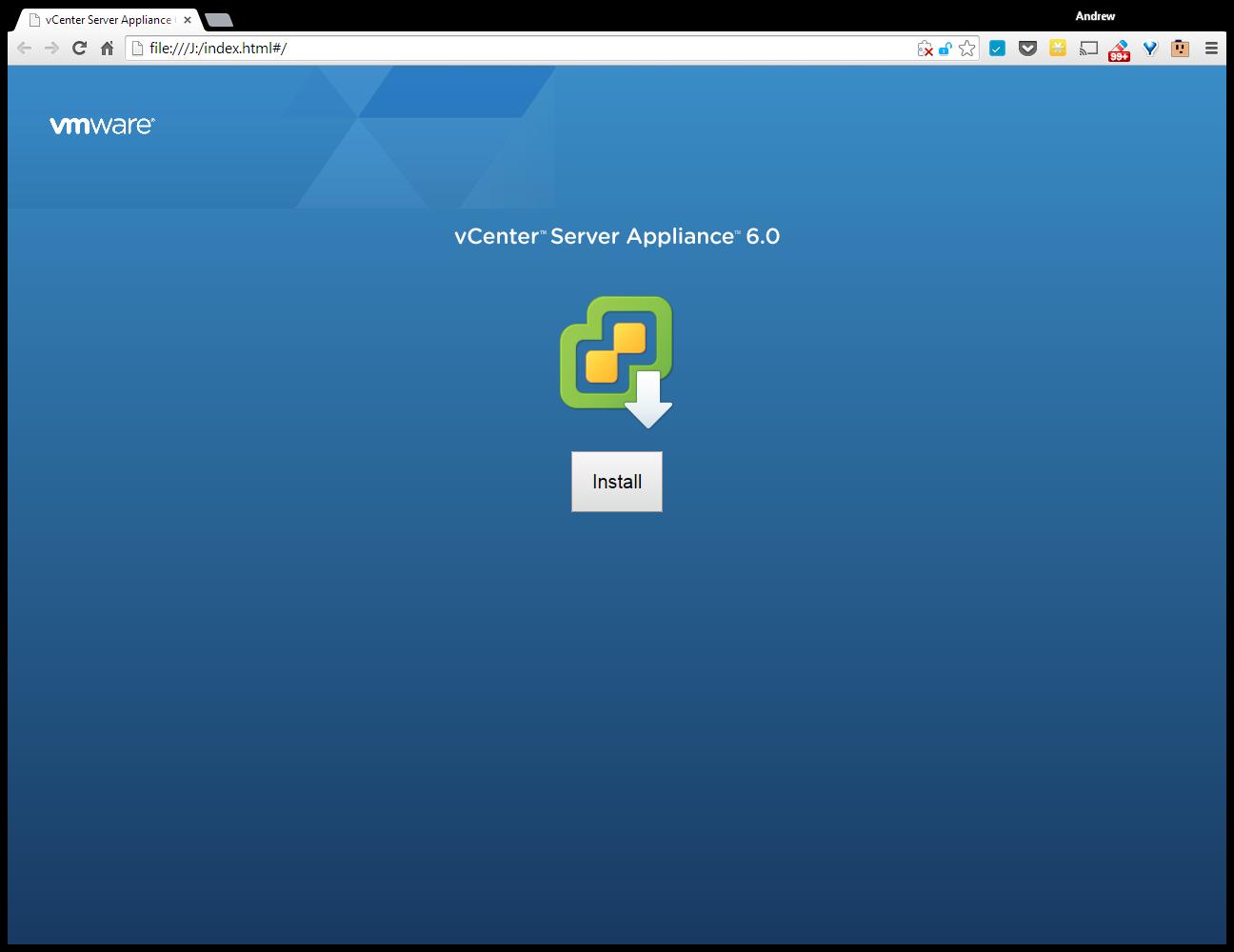A: Oracle 11g and 12c as an external database for vCenter Server Appliance is deprecated in the 6.0 release. VMware will provide general support as per lifecycle support policy. Q: What is the plan to support Microsoft SQL databases with vCenter Server Appliance 6.0? A: There is no plan to support Mircosoft SQL database as an external database. Apr 13, 2016 The VMware vCenter Server Appliance (vCSA) is a security hardened SUSE Enterprise 11 operating system baked with the vCenter server function. With vSphere 6.0 the appliance now has the same mins/max as the Windows installed version.
As an alternative to installing vCenter Server on a Windows virtual machine or physical server, you can deploy the vCenter Server Appliance.
Before you deploy the vCenter Server Appliance, download the ISO file and mount it to the Windows host machine from which you want to perform the deployment. Install the Client Integration Plug-In and then start the installation wizard.
For information about the vCenter Server Appliance requirements, see vCenter Server Appliance Requirements.
For information about the inputs that are required during the deployment of the vCenter Server Appliance, see Required Information for Deploying the vCenter Server Appliance.
The vCenter Server Appliance has the following default user names:

root with the operating system password that you enter while deploying the virtual appliance.
administrator@your_domain_name with the vCenter Single Sign-On password that you enter while deploying the virtual appliance.
After you deploy the vCenter Server Appliance, only the administrator@your_domain_name user has the privileges to log in to the vCenter Server system.
The administrator@your_domain_name user can proceed as follows:
Add an identity source in which additional users and groups are defined to vCenter Single Sign-On.
Give permissions to the users and groups.
For information about adding identity sources and giving permissions to the users and groups, see vSphere Security.
Version 6.0 of the vCenter Server Appliance is deployed with virtual hardware version 8, which supports 32 virtual CPUs per virtual machine in ESXi. Depending on the hosts that you will manage with the vCenter Server Appliance, you might want to upgrade the ESXi hosts and update the hardware version of the vCenter Server Appliance to support more virtual CPUs:
ESXi 5.5.x supports up to virtual hardware version 10 with up to 64 virtual CPUs per virtual machine.
ESXi 6.0 supports up to virtual hardware version 11 with up to 128 virtual CPUs per virtual machine.
You cannot deploy the vCenter Server Appliance by using the vSphere Client or the vSphere Web Client. During the deployment of the vCenter Server Appliance you must provide various inputs, such as operating system and vCenter Single Sign-On passwords. If you try to deploy the appliance by using the vSphere Client or the vSphere Web Client, you are not prompted to provide such inputs and the deployment fails.
For information about upgrading the vCenter Server Appliance, see vSphere Upgrade.
For inventory and other configuration limits in the vCenter Server Appliance, see the Configuration Maximums documentation.
For information about configuring the vCenter Server Appliance, see vCenter Server Appliance Configuration.
Vmware Vcenter Server Appliance 6.0 503 Service Unavailable
Important:Vmware Vcenter Server Appliance 6.0 Free Download
vCenter Server 6.0 supports connection between vCenter Server and vCenter Server components by either IPv4 or IPv6 addresses. Mixed IPv4 and IPv6 environment is not supported. If you want to set up the vCenter Server Appliance to use an IPv6 address allocation, make sure to use the fully qualified domain name (FQDN) or host name of the appliance. In an IPv4 environment, the best practice is to use the FQDN or host name of the appliance, because the IP address can change if assigned by DHCP.